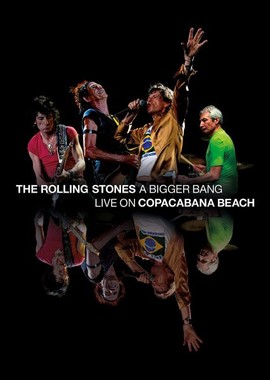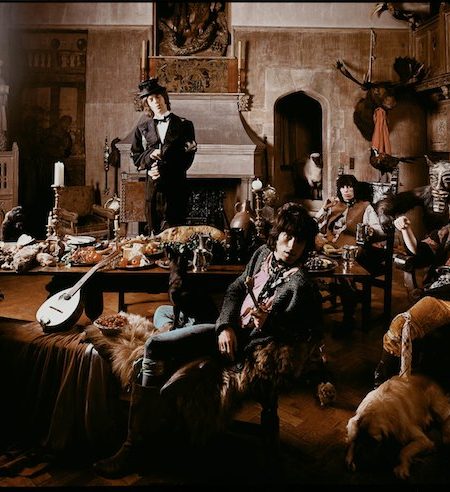
"Melody" is based on "Do You Love Me" by Billy Preston and Bruce Fisher, from Preston's 1973 album Everybody Likes Some Kind of Music.


Bill Wyman would later release a version of "Melody" with his Rhythm Kings, crediting Preston as author. While all the album's songs except "Cherry Oh Baby" were officially credited to Jagger/Richards as authors, the credit for "Hey Negrita" specifies "Inspiration by Ron Wood" and "Melody" lists "Inspiration by Billy Preston". Musical and thematic styles were merged on the seven-minute "Memory Motel," with both Jagger and Richards contributing lead vocals to a love song embedded within a life-on-the-road tale. Stylistically, Black and Blue embraces hard rock with "Hand of Fate" (solo by Wayne Perkins) and "Crazy Mama" funk with "Hot Stuff" (solo by Harve Mandel) reggae with their cover of "Cherry Oh Baby" (Ronnie Wood and Keith Richards weaving guitars) and blues with "Melody," featuring the talents of Billy Preston – a heavy contributor to the album. That month the Stones flew to Sanibel Island Beach on Sanibel Island, Florida, to be photographed by fashion photographer Hiro for the album cover art. After some final touch-ups, Black and Blue was completed in New York City in February 1976. "Cherry Oh Baby" (which was a cover version of Eric Donaldson's 1971 reggae song) would be the only song from the upcoming album sporadically played on the 1975 Tour of the Americas.įollowing the conclusion of the tour, the band went to Montreux, Switzerland, in October for some overdub work, returning to Musicland Studios in Munich in December to perform similar work. With much work to follow, it was decided to delay the album for the following year and release the Made in the Shade compilation instead. Jeff Beck stated that, "in two hours I got to play three chords – I need a little more energy than that." Beck's jamming with the Stones remains unreleased to date, but is available on bootleg recordings. Guitar heroes Rory Gallagher and Jeff Beck both went over for a jam with the band "just to see what was going on," but both declined interest in joining the group, happy with their solo careers. Among the hopefuls were Steve Marriott, Harvey Mandel, Wayne Perkins, Peter Frampton, and Ronnie Wood (although only Mandel, Perkins and Wood's guitar work would appear on the finished album). With a view to releasing it in time for a summer 1975 Tour of the Americas, the band broke for the holidays and returned in January in Rotterdam, Netherlands, to continue working-all the while auditioning new guitarists as they recorded. The Rolling Stones returned to Munich, Germany, in December 1974-where they had recorded their previous album It's Only Rock 'n' Roll-and began the recording of their new album at Musicland Studios, with Mick Jagger and Keith Richards (as the Glimmer Twins) producing again. Retrospective reviews from more recent publications such as AllMusic have been kinder to the album, with critic Stephen Thomas Erlewine stating that the album's "being longer on grooves and jams than songs" ended up being "what's good about it". The album received a few positive reviews at the time of release, though many reviewers found it mostly forgettable, and tended to rank it very low compared to prior Stones releases. Only one single from the album, " Fool to Cry", had any significant chart success, and reception to the album was mixed. The album was the second to be self-produced, credited to " The Glimmer Twins", a pseudonym used by Jagger and Richards for their roles as producers.īlack and Blue showed the band blending its traditional rock and roll style with heavy influences from reggae and funk music. Brown also appearing on about half of the tracks. The Stones rhythm section of bassist Bill Wyman and drummer Charlie Watts appear on nearly all tracks, and frequent collaborators Nicky Hopkins and Billy Preston play keyboards on most of the album, with percussionist Ollie E. Wood had previously contributed to the title track from the It's Only Rock 'n Roll album, and became a temporary touring member of the Stones in 1975 and official member in 1976. Richards said of the album that it was used for "rehearsing guitar players, that's what that one was about." Numerous guitarists showed up to auditions those who appeared on the album were Wayne Perkins, Harvey Mandel, and Ronnie Wood.

As he had done the previous time the Stones were between second guitarists in 1968, Keith Richards recorded the bulk of the guitar parts himself, though the album recording sessions also served as an audition for Taylor's replacement. This album was the first recorded after former guitarist Mick Taylor quit in December 1974. Black and Blue is the 13th British and 15th American studio album by the English rock band the Rolling Stones, released on 23 April 1976 by Rolling Stones Records.


 0 kommentar(er)
0 kommentar(er)
